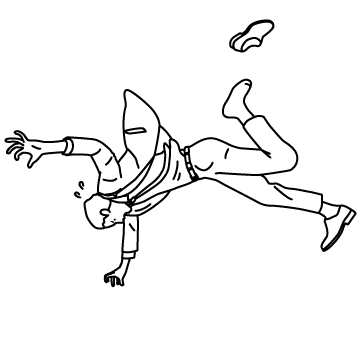最近物の値段が高くなったな~と感じませんか?
大学生で一人暮らしだと、少し値上がりしただけでも大打撃くらったりするわけで..w
この記事では日本のトップ企業の動向が書いていますが、現状維持で踏ん張れる企業は少なそうです...。

https://toyokeizai.net/articles/-/598228
日本マクドナルドホールディングスは、今年3月14日、一部品目で店頭価格(税込み)を10~20円値上げした。値上げ翌月の4月の既存店の客数は、前年同月比3.9%増加。5月も同4.8%増と悪影響は出ていない。客単価に関しても4月は前年同月比7.1%増、5月は同0.3%増と好調に推移している。
牛丼大手チェーンも状況は似ている。吉野家ホールディングスは「吉野家」で昨年10月、牛丼並盛を税込み387円から426円に改定するなど値上げした。それでも翌月以降の既存店売上高は前年同月比8.7%増、7.4%増、4.0%増、6.1%増、11.9%増、11.6%増、9.8%増と順調にきている。
ゼンショーホールディングスが展開する「すき家」も、昨年12月、牛丼並盛を税込み350円から400円に改定するなど値上げしたが、翌1月以降の既存店売上高は前年同月比10.9%増、11.4%増、11.4%増、8.3%増、6.3%増で推移している。
ファーストリテイリングは、6月の新商品展示会で、今年の秋冬物の「ユニクロ」の商品のうち、定番の衣料品の一部を値上げすることを明らかにした。対象品目の数は定まっていないが、主な商品ではいずれも税込みで、フリースがこれまでの1990円から2990円に、ダウンジャケットが5990円から6990円に、それぞれ1000円引き上げられる。
ユニクロは2014年と2015年の秋冬シーズンに、円安や原材料高などを受けて2年連続で値上げを実施したことがある。1度目の値上げを行った2015年8月期の国内ユニクロ事業は増収増益を達成したが、2度目は消費者に受け入れられず、2016年8月期の同事業の営業利益は1割以上減少した。
上記の企業では値上げしても顧客の足は遠のくことはなく、むしろ増加しているというのに驚きです。
そもそも円安傾向にあるのは、日本円と米ドルを比較して、日本よりもアメリカの政策の方が未来があると感じる人が多いために円をドルに交換され、相対的な円の価値が低下する仕組みになっています。
ここ30年の日銀の政策として
利上げ不可。
今更ここ30年の政策が間違っていました。 なんて言えるわけもなく...
アメリカは利上げによってインフレが起き、物価・所得ともに上昇していますが、日本は今のところ出来そうにないのが現状です。
それは過去9年間の日銀政策にあります。
まず第一段階として、”量的質的緩和政策”を実行します。
簡単に言うと、株式や債券を日銀が買い上げて流通するお金の量を増やそう!作戦です。しかし、これでも物価は上がりません。
次に第二段階として、”マイナス金利政策”を実行します。この言葉は皆さん聞きなれているかもしれません。
要は、銀行にずっと預けていると減ってしまうから、世の中に回しましょう!作戦です。しかしながら、これもうまくいかず失敗。
最後に”イールドカーブ・コントロール”要は長期金利政策です。
3つともお金の流通を促すための物でしたが、今のところ成果は見られていません。
資産を持っている人からしてみれば日本はそんなに魅力的ではないということですね。
この状況自体が悪いわけではありませんが、国民の所得が上がらなければ物が買えないわけですからますます悪い方向に進んで行ってしまうのは明らかではないでしょうか?
日本は食料もエネルギーも自給率が低く、他国に依存している状況の危うさに早く気付かなければならないでしょう。
English edition
Today's blabbermouth
Do you feel that the prices of things are getting higher these days?
As a college student living alone, even a slight increase in price can be a big blow to you.... . w
This article describes the trend of Japan's top companies, but it seems that few companies can hold on to the status quo....
https://toyokeizai.net/articles/-/598228
On March 14 of this year, McDonald's Holdings Japan raised the retail price (including tax) of some items by 10 to 20 yen. In April, the month following the price increase, the number of customers at existing stores increased 3.9% y/y, and in May it increased 4.8% y/y, with no negative impact. The number of customers per customer was also up 7.1% y/y in April, and up 0.3% y/y in May.
The situation is similar for the major beef bowl chains. Yoshinoya Holdings Co. raised the price of its Yoshinoya beef bowl from 387 yen to 426 yen, including tax, last October. Even so, since the following month, same-store sales have been growing steadily, increasing 8.7%, 7.4%, 4.0%, 6.1%, 11.9%, 11.6%, and 9.8% y-o-y, respectively.
Sukiya, which is operated by Zensho Holdings, also raised the price of its beef bowl from 350 yen to 400 yen including tax last December, but since the following January, comparable store sales have increased 10.9%, 11.4%, 11.4%, 8.3%, and 6.3% y/y.
At a new product exhibition in June, Fast Retailing revealed that it will raise the prices of some of its standard clothing items for this year's fall/winter UNIQLO lineup. The number of items to be affected has not been determined, but all major items will see a ¥1,000 increase in price, including tax, from the previous ¥1990 to ¥2,990 for fleece and from ¥5,990 to ¥6,990 for down jackets.
UNIQLO had previously raised prices for two consecutive years in the fall/winter seasons of 2014 and 2015 due to the weak yen and high raw material prices. profits declined by more than 10%.
It is surprising to see that even though the above companies have raised prices, customers have not been deterred; in fact, they have increased.
To begin with, the trend toward a weaker yen is a mechanism whereby the yen is exchanged for dollars and the relative value of the yen declines because many people compare the Japanese yen to the US dollar and feel that US policy has a better future than that of Japan.
The BOJ's policies over the last 30 years have been
No interest rate hikes.
The policy of the last 30 years was wrong now. How can you say...
In the U.S., interest rate hikes have led to inflation and rising prices and incomes, but Japan is not likely to be able to do so at this point in time.
The reason lies in the policies of the BOJ over the past 9 years.
The first step is to implement a "quantitative and qualitative easing policy.
Simply put, the BOJ will buy up stocks and bonds to increase the amount of money in circulation! This is the strategy. However, even with this strategy, prices will not rise.
The second step is to implement a "negative interest rate policy. You may be familiar with this term.
In short, if we keep money in the bank all the time, it will decrease, so let's put it back into the world! This is a strategy. However, this strategy did not work either.
Finally, "yield curve control" is a long-term interest rate policy.
It stabilizes the interest rate on government bonds for 10 years. .... The same applies below.
All three policies were designed to encourage the circulation of money, but so far they have not been successful.
So from the perspective of those who have assets, Japan is not that attractive.
This situation in itself is not necessarily bad, but it is clear that it will go from bad to worse if people's incomes do not rise because they cannot afford to buy things.
Japan is not self-sufficient in both food and energy, and we must quickly realize the danger of our dependence on other countries.